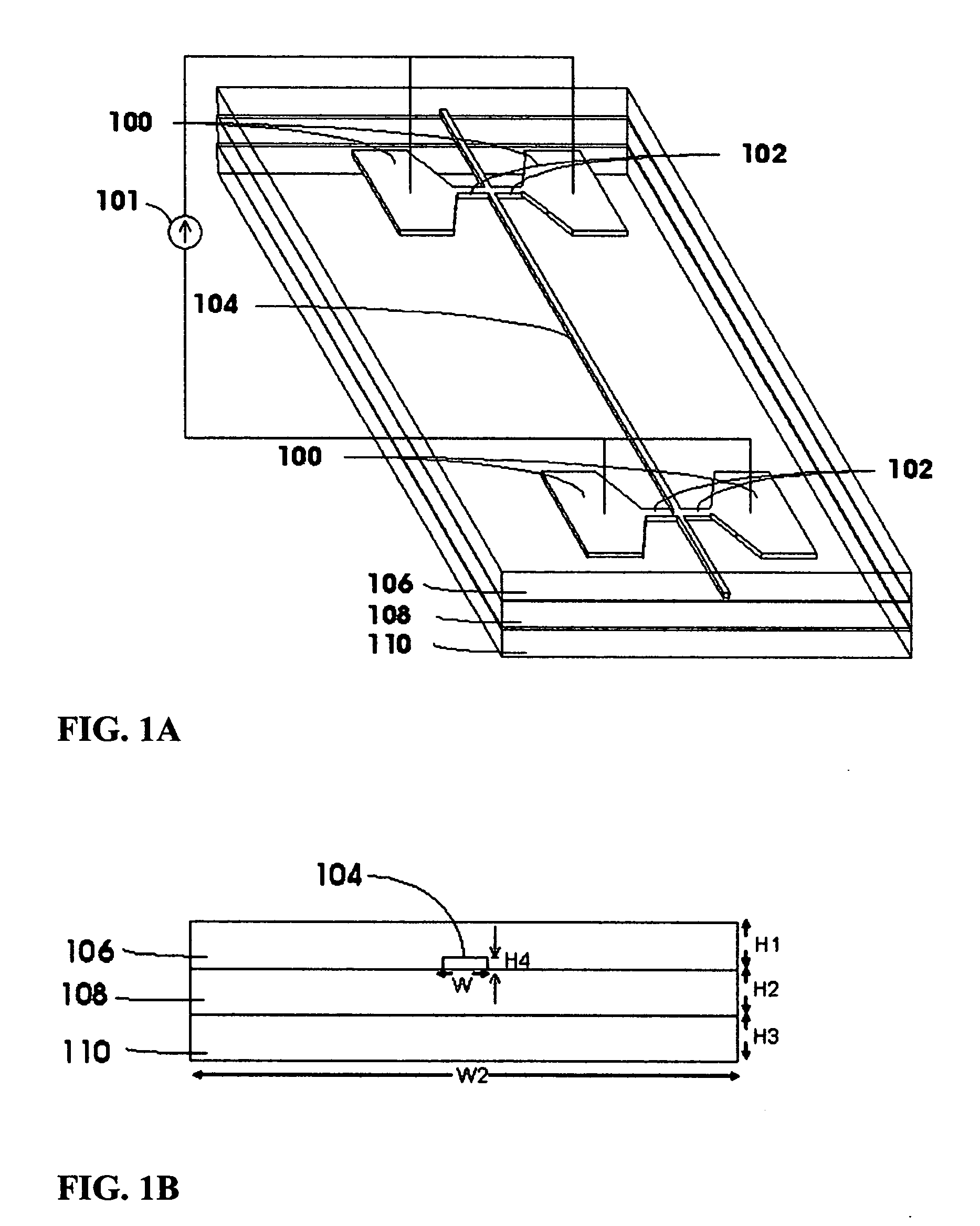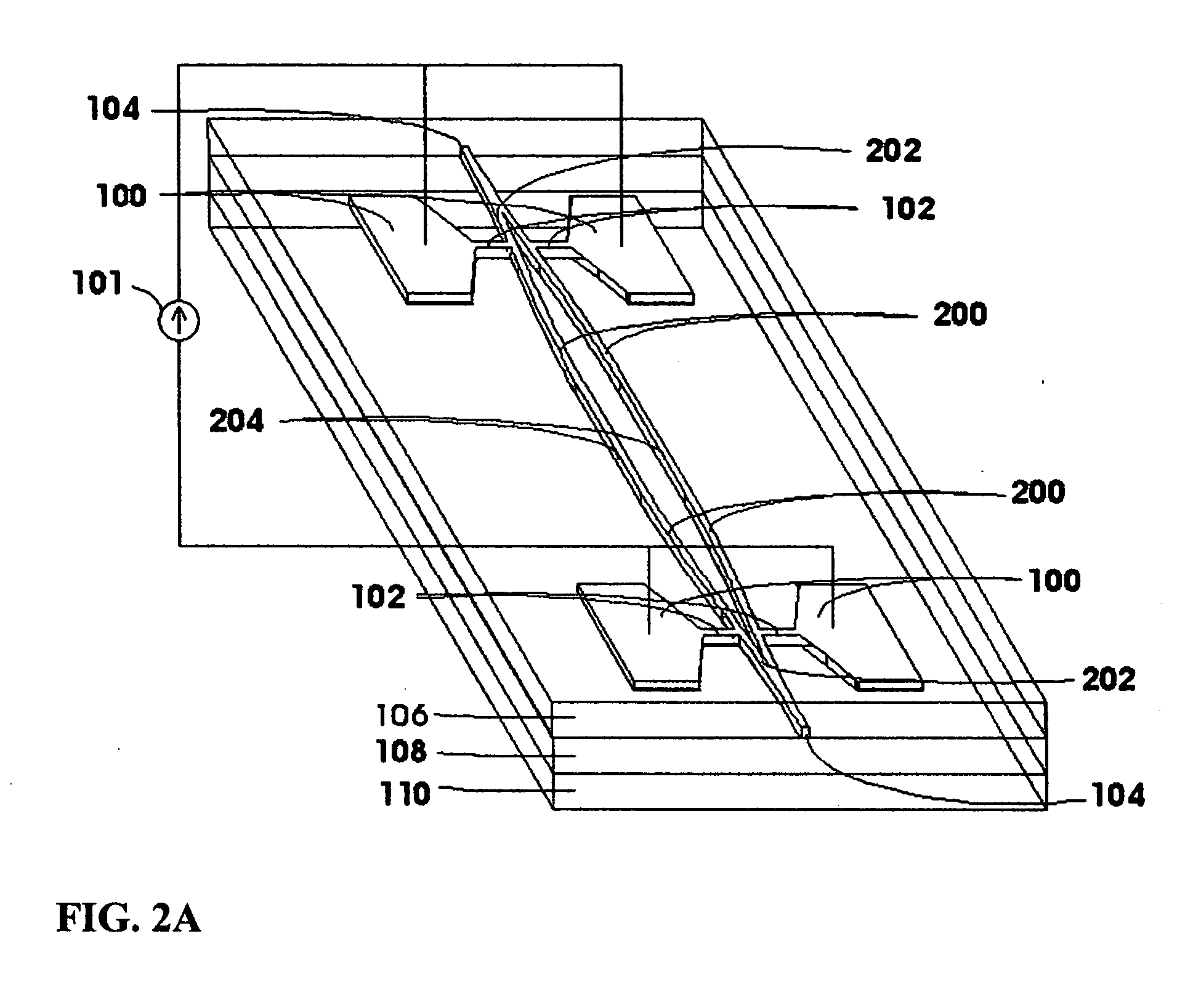Thermo-optic plasmon-polariton devices
a technology of plasmon polariton and optical plasmon, which is applied in the direction of optics, instruments, optical light guides, etc., can solve the problems of insatisfactory known devices, time-consuming process, and less than optimal energy efficiency of devices
- Summary
- Abstract
- Description
- Claims
- Application Information
AI Technical Summary
Benefits of technology
Problems solved by technology
Method used
Image
Examples
Embodiment Construction
In the following description, a straight waveguide VOA will be referred as a SWGVOA while a VOA based on a MZ configuration will be referred as a MZVOA. Also, the terms “plasmon-polariton wave” and “optical mode” used herein refer to the main long-ranging plasmon-polariton wave supported by the waveguide and denoted ssn0 in the afore-mentioned U.S. Pat. No. 6,442,321. The terms “waveguide heater” and “waveguide monitor” will be used herein when referring to the strip (which with the surrounding material forms the optical waveguide) being used as a heating element and a temperature monitor, respectively.
FIGS. 1A and 1B and show the basic structure of a SWGVOA. The SWGVOA comprises a core 104 of predetermined length. The desired properties of the core of the waveguide 104 include a negative real permittivity, a small imaginary permittivity and high thermal diffusivity, in order for the core 104 to be able to produce heating and still maintain low optical loss, the core material 104 ...
PUM
 Login to View More
Login to View More Abstract
Description
Claims
Application Information
 Login to View More
Login to View More - R&D
- Intellectual Property
- Life Sciences
- Materials
- Tech Scout
- Unparalleled Data Quality
- Higher Quality Content
- 60% Fewer Hallucinations
Browse by: Latest US Patents, China's latest patents, Technical Efficacy Thesaurus, Application Domain, Technology Topic, Popular Technical Reports.
© 2025 PatSnap. All rights reserved.Legal|Privacy policy|Modern Slavery Act Transparency Statement|Sitemap|About US| Contact US: help@patsnap.com



